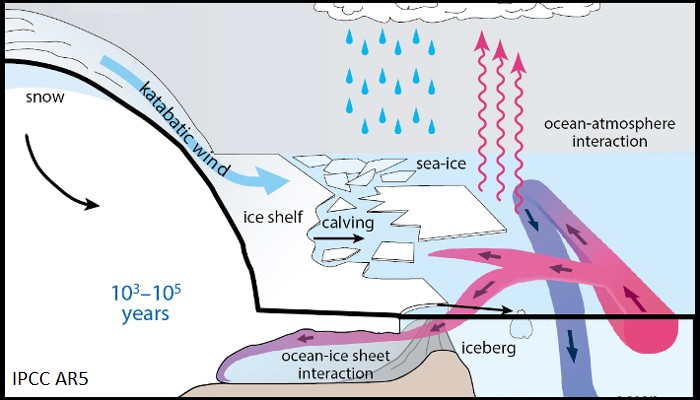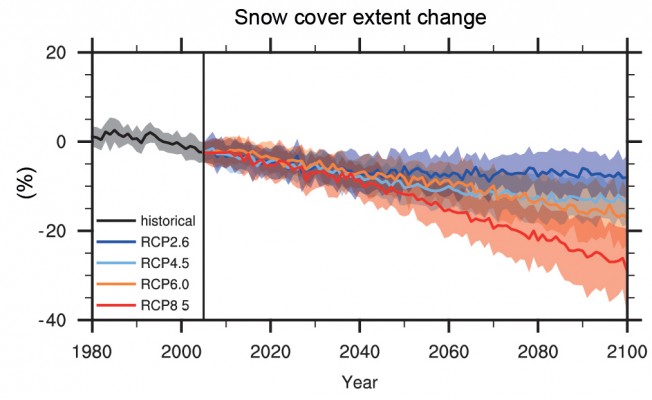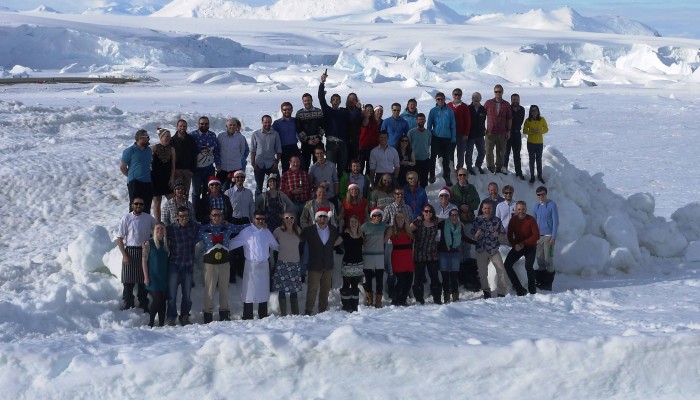Many glaciologists look forward to going on fieldtrips and then, once they are back, they make us dream by posting breathtaking photos (like THIS or THIS or THIS). However, the reality of the field can sometimes be very different…. The picture illustrates how difficult it can be to work on sea ice when the snow on top of it starts to melt and forms slush (a mixture of snow and liquid water t ...[Read More]
Image of the Week: Icequakes! Stick-Slip motion under Western Greenland

The Greenland Ice Sheet contains enough fresh water to raise global sea level by around 6 m, therefore it is very important to understand how the ice moves from the interior of the ice sheet towards the oceans. Processes that happen at the base of the ice sheet, where the ice meets the bed, are known to be a key control on how the ice moves. Geophysical techniques, such as recording tiny icequakes ...[Read More]
Image of Week: Blue Ice in East Antarctica

The blue ice areas of Antarctica are one of the most fascinating parts of the ice sheet. In these regions, snowfall is so low that the ice is laid bare by the wind and consequently sublimates. This exposes beautiful, blue ice surfaces, like an ocean frozen in time. This picture was taken at a site named “Windy Corner” by the Kottas Mountains, in the northernmost part of the Heimefrontf ...[Read More]
Image of the Week — Greenland ice sheet and clouds

A new study combining satellite observations and model simulations shows that clouds increase meltwater runoff in Greenland by one-third compared to a cloud-free scenario. Precipitation effects not considered, clouds above the Greenland ice sheet reduce its Surface Mass Balance (SMB) [red in figure] compared to clear-sky conditions [blue in figure]. Because clouds trap the outgoing radiation from ...[Read More]
Image of the Week — Happy New Year
December 2014, 11:50 p.m., the sun licks the horizon on Derwael ice rise; It’s time to go back to the tent … The shot was taken during the 2014 IceCon Field campaign in East Antarctica (read Brice’s blog post telllling about his first journey to Antarctica). Here, you can also read about the 2016 field season of the IceCon project, which started just a few days ago.
Image of the Week — Greetings from Antarctica
Christmas greetings from people at Rothera Research Station, Adelaide Island, Antarctica. Rothera, which is the British Antarctic Survey’s largest base in Antarctica, is a centre for marine biology and gateway for getting scientists into their deep field camps. Christmas Day is a regular working day for the staff of around 90. However the chefs will be getting everyone into the festive spiri ...[Read More]
Image of the Week — AGU Fall Meeting 2015
The American Geophysical Union (AGU) Fall Meeting, which takes place every December in San Francisco is ending today. With more than 24 000 attendees, 14 000 poster presentations and 7 000 talks, the AGU meeting is the largest conference on geophysical sciences in the World. The cryosphere is one the topics covered by the meeting and we hope that this year edition was a fruitful for every partici ...[Read More]
Image of the Week: Ice Sheets in the Climate

Ice sheets play a central role in the climate system. They store significant amounts of fresh water and are the conveyor belts for transporting snow that accumulates on land back into the oceans. The figure above shows a few of the ice-climate interactions. In the figure below (click on the figure for full resolution) we see the complete picture of the processes taking place between ice sheets, so ...[Read More]
Image of the Week: Atmospheric CO2 from ice cores

The measurements of atmospheric CO2 levels at Manu Loa, Hawaii read 401.01ppm on the 7th of December this year. To understand the significance of this number, you just need to look at the figure above from the 4th IPCC report. It shows the changes in CO2 concentrations during the past 800,000 years based on ice core measurements. Values have fluctuated between 190ppm and 280ppm. In other words, bo ...[Read More]
Image of the Week: Changes in Snow Cover

Who is dreaming of a white spring? In daily life we might be more interested in the chances of a white Christmas, but the amount of snow-covered ground in the spring is a very good indicator of climate change. The figure above shows the projected change in snow cover extent in the Northern hemisphere in March-April according to different future scenarios (i.e. Representative Concentration Pathways ...[Read More]




